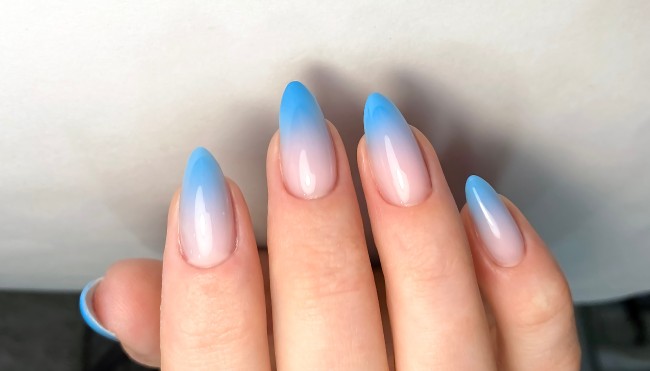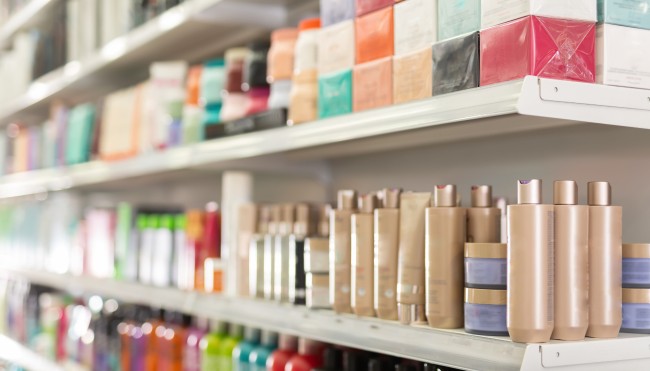These cosmetic products are free from synthetic polymers
Plastic microbeads can no longer be used in cosmetics and personal care products in the UK. But other poorly degradable synthetic polymers such as acrylates copolymers are still regularly added. Many cosmetic products, from shampoo to peels and make-up, contain synthetic polymers. These substances can be discharged into the sea via wastewater and thus endanger the environment and marine life. We show you which products you can use with a clear conscience.
What are microbeads?
The term microbeads covers all solid and insoluble synthetic polymers that are smaller than five millimetres. In general, a distinction is made between primary and secondary microbeads. The latter is created when larger plastic parts, such as plastic bags, disintegrate. Primary microbeads, on the other hand, are industrially produced, usually in the form of fine plastic granules. The microscopically small plastic particles are also found as cheap fillers under names such as "polyethylene" or "nylon 6" in various cosmetics, including peels or shower gels, but also in lipsticks, make-up, and the like. However, since 2018 microbeads can no longer be used in rinse-off cosmetics and personal care products in the UK. Leave-on products remain unaffected from this ban.
What are synthetic polymers?
"Synthetic polymers can be liquid, gel-like, waxy, or solid depending on the starting material," says Dr. Ruta Almedom, ingredients expert at CodeCheck. "In liquid form, unlike in granular form or as microbeads, these synthetic substances do not have any abrasive or peeling properties, but rather serve as binders or fillers. Liquid synthetic polymers differ in their physical state from solid microplastics, as they can be water-soluble, for example. However, since some of these polymers are also poorly degradable, their environmental impact is expected to be similar.”
Many synthetic polymers that are difficult to degrade, such as "acrylates copolymer", "acrylates/C10-30 alkyl acrylate crosspolymer" or "polyquaternium-7" cannot be completely filtered out by the filter systems of sewage treatment plants. Therefore, they may enter our rivers and seas, potentially attract pollutants, and can form films or cluster in the water. But like microbeads, poorly biodegradable liquid polymers are not only a problem for marine life. Even if those substances are filtered out by wastewater treatment plants, sewage sludge enriched with synthetic polymers still ends up on our fields - on our fruit, vegetables, and grain. The long-term consequences are yet unknown.
Plastics can bind harmful environmental toxins
Synthetic substances can not only end up in our food chain, but also accumulate everywhere in our environment. Even in the Arctic Ocean, researchers have now found up to one million plastic particles per cubic kilometre. The smaller the particles, the more likely they are to be ingested by marine organisms, seals, fish, or mussels. The synthetic materials also enable them to absorb other harmful environmental toxins, which are attracted by the chemical and physical surface properties of the plastics. Once the plastics are in the gastrointestinal tract of animals, tissue changes, inflammatory reactions, and even death can occur. Many polymers are durable and can therefore survive for a very long time in the oceans and our environment. Since it is almost impossible to remove the smallest particles afterwards, it is important to completely avoid the new entry of hardly degradable substances in the long term.
The difference between leave-on and rinse-off products
Regarding the ban of microbeads in cosmetics, two important points are usually ignored. First of all, there are not only microbeads in our cosmetics, but also other synthetic polymers in dissolved, liquid, or gel-like form. These also include silicones. These are usually just as difficult to break down in the environment as microbeads. Secondly, a ban on microbeads only applies to so-called rinse-off products, but not to leave-on products such as make-up.
The difference between the two categories is that one group of products, such as shower gel or shampoo, is rinsed off. The other group, or leave-on products theoretically remain on the skin. However, make-up, mascara and the like are also washed off the face at the end of the day. A comprehensive ban would be more effective.
These products are free from microbeads and synthetic polymers
Shower gels
In shower gels, "acrylates copolymer" or "acrylates crosspolymer" are often used as film formers. These shower gels are free from them. By the way, with a bar of soap you save unnecessary packaging or plastic waste.
Lipsticks
Many Lipsticks can contain PE “polytehylene” and PET “polyethylene terephthalate”
Face creams
"acrylate crosspolymer" is particularly common in face creams, where it is used to stabilize and thicken products. These face creams do not contain polymers that are difficult to break down:
Related Link:
- CodeCheck Study- The Invisible Danger Hidden Polymers in Cosmetics Products





